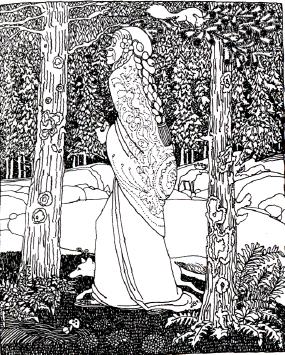|
Stars on
the end-time Horizon 5 March 2007
Flanders
I guess I began contemplating the 2012 end-time in the early 1970s, inspired by the publication of Mexico Mystique by anthropologist Frank Waters. I had been working with precession for some years, but tools and techniques were quite primitive back in those days.
I had no access to a computer, and there
was not yet a lot of fancy calculation in print, either on
precession or Mesoamerican calendrics. Anthony Aveni's Skywatchers
of Ancient Mexico was not published until six years later. In the
next decade, the 1980s, archeo-astronomy took off famously, with many
books appearing at once. It was a heady time to be on the trail of
ancient skylore.
From
megalithic astronomy we take instruction on the long view of
civilization and the millennial parameters of cultural evolution.
At the
time, Frank Waters was the dean of Native American anthropology. He
lived not far from me, up north in Taos, about an hour's drive along
a spectacular route that (after Pilar) follows the course of the Rio
Grande. That summer I visited him at Arroyo Seco. Tall and thin as a
beanpole, he was an amiable and elegant man. We discussed the
long-range parameters of cultural change and historical upheaval
reflected in planetary and sidereal cycles.
He noted that the Fifth Age is not just another age in the sequence because,
Citing Aztec Thought and Culture by Miguel Leon-Portilla (a superb book, by the way), he added:
Writes Leon-Portilla:
Waters saw in the heart-movement motif our challenge at the end-time: to find the path of heart for humanity, our species. He sensed that we might respond to that challenge by taking instruction from the myth of Quetzalcoatl. In his rendition of this myth, Waters noted that Xolotl was identical with Kukulcan of the Maya, a lightning god associated with Itzamna, the celestial serpent (Milky Way).
Maya and
Aztec myth alike see in Xolotl the twin of the Plumed Serpent
Quetzalcoatl, whose Mayan name is Gucumatz.
In his overview of the full 5124-year period, Waters discussed the Hindu Yugas and drew upon the work of siderealist Cyril Fagan, anthroposophist Gunther Wachsmith, Gurdjieffien Rodney Collin, all of whom attempted to construct a coherent model of the Zodiacal ages - alas, without much success.
The
problem is, or was at that time, that none of these people had the
complete astronomical picture that shows how the pattern of Zodiacal
ages is structured according to an extra-Zodiacal factor: the
galactic center.
The solar system (* SS) in the spiral arms or limbs of the galaxy. The third limb, counting outwards from the center, is called the Orion limb. Distance from the SS to the galactic center (GC), about 24,000 light-years. Full span of limbs, about 30-32,000 LY.
The view is foreshortened, making the outer limb look larger. Today we have the advantage of knowing quite a lot about the galactic alignment of the Zodiac.
Many current discussions of 2012 assume this alignment to be the determining factor in the Long Count, considered astronomically, but, for some odd reason, the pattern of Zodiacal Ages is rarely factored into this perspective. The galactic alignment of the Zodiac gets a lot of attention, but the overall pattern of the Zodiacal Ages is ignored - a serious oversight in end-time astronomy.
Yet 2012 has been associated with
the Aquarian Age.
Of this three percent, only a minute selection
comprise the massive figures of the Zodiacal constellations. The
maximum distance of these stars is not more than 1500 light-years,
compared to the distance of 24,000 light-years to the galactic
center.
It intersects the band of Zodiacal constellations at two points, between Taurus and Gemini, and between Scorpio and Sagittarius.
The above map (Erlewine, Astrophysical Directions) shows the Milky Way as the shaded area.
The path of the ecliptic where the sun moves through the sky (actually, the orbital plane of the earth) runs from right to left, crossing the Milky Way at an angle of about 65 degrees. Out of the 88 constellations in the celestial sphere surrounding the earth, the ecliptic traverses thirteen distinct star-patterns: Taurus, Gemini, and Cancer are shown here.
The
Zodiacal constellations, or ecliptic constellations as they can also
be called, stand apart from the extra-Ecliptic constellations, such
as Orion seen here beneath Taurus. Orion, with his right arm raised
up toward the horns of Taurus, seems to dangle off the Milky Way.
Other star-patterns are
spread out over the expanse of the celestial sphere in all
directions.
The illustration below shows at the center a typical horoscope plotted on the grid of twelve astrological signs, and simultaneously, the real-sky constellations excluded from the horoscope.
Although it is difficult to make out the details, the central wheel consists of the twelve zodiacal signs (Aries, Taurus, Gemini) with planets in them on a specific date.
The sign Zodiac of popular astrology uses a division of the ecliptic plane into twelve equal slices, like a pizza. Planetary positions are measured on this uniform grid irrespective of their actual. observable positions relative to the surrounding stars. Beyond the sign Zodiac we see the shape and extent of the real-sky constellations that lie along the rim of the ecliptic; hence I call this model the "Rimsite."
The
arrows extending outwards from the starless horoscope show how each
planet in the sign Zodiac has another position in the star Zodiac.
This is conversion to Star Base™, the graphic format of the real-sky
constellations.
Astrologers
locate planets in that format (the orbital plane of the earth
divided into twelve equal sections of 30 degrees each) and totally
ignore the irregular star patterns visible in the night sky.
Astrology ignores the stars. We have to look to astronomical
resources to work out any patterns of Zodiacal timing that may apply
to 2012.
It might be equated to the one-hour mark on a clock face. Imagine that the immense ecliptic plate is a clock face numbered 1 to 12 and divided into four quadrants, framed by a graphic display of thirteen mythical figures such as a bull, crab, scorpion, centaur, etc. The clock face rotates so that in one epoch of history the one-hour mark stands in front of the bull (Taurian Age: 4400 - 1850 BCE), but in another epoch, it stands in front of the crab (Cancerian Age: 7800 - 6150 BCE).
Precession, then, is the rotation of the ecliptic
sign-carousel relative to the circle of environing real-sky
constellations.
- and by graphics, presenting a visual or imaginary version of the star-pattern:
Any astronomical map will show the position of the spring equinox for a given date (VP: 1950), but traditionally, maps used for naked-eye observation depict the constellations graphically, e.g., the two fishes of Pisces in the celestial atlas of Elijah Burritt, 1835, based on the woodcuts of Albrect Durer, 1510.
One of the fishes swims up and away from the ecliptic, toward Andromeda, the Chained Woman. The other swims westward along and above the ecliptic toward the neighboring constellation of Aquarius.
The second fish
might be imagined to be swimming into currents that stream from the
urn held by the Waterbearer. This is one way to visualize the
transition from Pisces to Aquarius.
Beta Piscium, the star that marks the nose of the fish
swimming left to right along the ecliptic, has a longitude of 348.59
for the year 2000. This is 11.41 degrees from the VP, the zero point
on the ecliptic. 11.41 X 72 = 822 years until the VP reaches that
star and leave the Pisces composite. Technically, the VP does enter
the composite stars of the constellation of Aquarius until 2822 CE!
Unlike other students of cosmic
timing, I reject the model of twelve Ages computed in uniform
periods of 2160 years. It is far more instructive, I contend, to
look at the timing of the Ages in real astronomical terms.
I prefer to the leave
the well-known Greco-Latin names (Aries, Taurus, Gemini, etc) to
designate the astrological signs, and to adopt pictorial,
"story-book" names for the real-sky constellations: Ram, Bull,
Twins, etc. Unfortunately, astronomical maps use the astrological
names. In the astronomical map above I have supplied the pictorial
names, Ram, Fishes, Waterbearer, in place of the usual Latin names.
The placement in the constellation does not mean that this person, presumed to be a Libra, is really a Virgo. The real-sky placement of the sun, the moon, and planets does not denote personality, and does not yield a stereotype comparable to the Sun sign types in astrology.
It points to another dimension of human
experience, the transpersonal realm.
The VP goes around the Zodiac from one Age to the next, precessing against the natural or seasonal order of the constellations.
The Ages run in reverse:
This is the sequence of the Ages, but it
does not reveal their pattern. We only discover the pattern of
cosmic timing when we lock the complete cycle of Zodiacal Ages into
an extra-Zodiacal framework so that the zero hour or midnight hour
can be determined. The decisive factor outside the Zodiac is the
galactic center.
Currently, the position of
the winter solstice, where the sun stands on December 21 each year,
is about three degrees westward from the best estimate for the
sightline to the galactic center: that is, 27 degrees of the
astrological sign Sagittarius, or ECL 267. The position of the
winter solstice is by definition at 270 on the ecliptic scale.
The start-date for the cycle
then ending would be 72 X 360 (the full cycle) less 2216 years =
23,704 BCE. The full duration of the current precessional cycle (Kalpa)
is 25,920 years. If you compare this period to a 24-hour day, we are
living in the last eleven minutes of that day.
(Paul LaViolette, known for his cataclysmic cosmic ray theory, claims to have discovered that the Archer points to the galactic center, but Erlewine's book appeared before his work. In 1977 anyone looking at Michael Erlewine's detailed sky maps could have made the observation. I clearly recall discussing it with astrologer Ray Mardyks in a cafe in Santa Monica in 1978.)
Erlewine's map (detail above) clearly shows the galactic center (GC) at 0 on the scale of the galactic equator, an imaginary line running transversely through the local limb.
The darkened region is the Milky Way, the lateral edge of the galactic arm we inhabit. We have already seen how the Milky Way intersects the ecliptic constellations of the Twins and the Bull in the northern reaches of the sky. Here, toward the south, it intersects the Scorpion and the Archer (the "story-book" names).
There is a distinct bulge in the
Milky Way in this region, suggesting the bulge of the immense star
mass at the hub of our galaxy. Toward the Archer we are looking at
the hub, but cannot actually see it because, astronomers say, it is
shrouded in a thick cloud of black dust.
It certainly looks more like a teapot than an archer aiming his bow! I would not claim that this constellation was designed to point out the galactic center, because, obviously, no star-pattern is a human construct.
But I would suggest that from
time before reckoning people were taught to visualize the composite
stars as an archer aiming his arrow in that way so that their
attention would be graphically directed to the galactic center.
Almost none of composites of the constellations resemble the
graphics attached to them. They are deliberate devices of
visualization intended to bring attention to specific astrophysical
directions.
The infrastructure of the Dendera Zodiac confirms this timescale.
Detail of the Dendera Zodiac, showing how Axis E points
Starry
Endowment
Likewise for the Fishes, which is a real-sky composite not to be confused with the astrological sign Pisces. If you are a Pisces (February 20 - March 21), you do not have the sun in the star pattern of the Fishes, but in the star pattern of the preceding constellation, the Waterbearer.
Yet this is
not exactly the case, either. If you are born in the last 10-12
degrees of the sign Pisces (i.e., after March 10), your natal sun is
indeed located in the composite stars of the fish that swims along
the ecliptic. Can we say, then, that in some cases a sign or part of
a sign will coincide with a constellation? Not really.
I discuss this matter at length in my book, Quest for the Zodiac.
The formidable task of decoding the Star Zodiac reveals what I call stellar phylogenetics. I mention it here because it may turn out that phylogenetic transfer is one of the key revelations of the end-time.
Rather than impose this notion as a pet idea of mine, I
would like to see how it reveals itself over time, in the immediate
future and the years leading up to 2012.
The other kind of inheritance is a transfer to the individual from the human species as a whole - genomic, rather than genetic (chromosomal).
The genomic inheritance, which I call the endowment, can be decoded from the array of planets in the graphic constellations, Ram, Twins, Virgin, Scorpion, etc.
Unlike
the astrological signs, which present a set of twelve psychological
types, the constellations of the real-sky Zodiac do not indicate
consistent personality traits but transpersonal gifts and faculties
inherited by each person from the experience of humanity at large:
the genomic endowment of humanity's long-range potential.
Precisely so. The real-sky Zodiac of thirteen irregular constellations is not only the frame of the World Ages but also presents the "cosmic code" of phylogenetic transfer. It shows how the genius of the human species evolves over time by a genomic transfer of peak potential.
Jenkins says,
The trick is, to understand how long-range
changes in the human species come to fruition via self-actualized
individuals living in a particular historical epoch.
His language for the Maya end-time points to that conception. In many ways Maya Cosmogenesis 2012, which appeared in 1998, is a parallel text to Quest for the Zodiac, published a year later. Jenkins based book on studies of the Maya calendar and cultural mythology of Mesoamerica, and I based mine on the Dendera Zodiac and comparative mythology.
The difference is in the way we
each set up expectations for the Next Age. Jenkins asserts that
precession is a model of evolution with each Age as a "growth cycle"
comprised of particular parameters and lessons (p. 22). He assumes
that with the change of the Age or shift to the "Next World,"
humanity as a whole undergoes a spiritual rebirth:
In the 2012 shift I see a moment when the surge of genius
potential in individuals who realize their endowment can play over
into collective life, inducing critical changes. To me the most
fascinating thing about 2012 is how the surge parlays into a social
and collective correction - or IF it does.
Novelty is a feature of human expression carefully observed and nurtured in the Mysteries, as I explain in Not in His Image. Gnostics identified the singularity of the human species by the Greek word monogenes, which scholars translate as "only-begotten." I protest that "only-begotten" is a received concept reflecting bogus theological doctrines that have nothing to do with the educational insight of the telestai, the seers who maintained the Mysteries. The singularity of the human species - its capacity to continually express novelty - is a central theme in the Gnostic myth of Sophia.
I propose that novelty emerges
as the peak potential realized by certain people in one generation
or historical epoch assumes a new configuration in a later
generation or epoch.
I propose that it is the moment when we acquire
the navigational skills to get to the end. In this process, which
will take about 200 years to unfold, the concept of the Galactic
Center is of paramount importance. Jenkins makes this point several
times, and I too insist on that emphasis, but with a different spin.
We cocoon in
ideational and technological gimmicky, in models and memes. Doing
so, we lose touch with the essential intelligence that informs all
life, and we even lose our connection to humanity itself, becoming
dehumanized, routinary, banal and predictable (as don Juan remarked
to Castaneda in their conversation about alien intrusion by "the
flyers").
They taught that Sophia is involved in a correction by
which she becomes aligned to the cosmic source of all organic life
in our galaxy: the galactic core or Pleroma. We have seen that
knowing the actual physical locality of the core is essential to
plotting the cycle of Zodiacal Ages by the determination of a
midnight hour based on extra-Zodiacal alignment.
Exploring this
question is, in my view, the leading challenge of the 2012 end-time.
There is huge speculation about pole shift and the reversal of the magnetic fields, but these phenomena are not considered in terms of conscious orientation of the Gaian mind. As far as Gaia is concerned, the materialistic paradigm still prevails, and the assumption of blind, unconscious matter pervades the debate.
When do we start talking about the shift of the planetary mind,
Sophia's correction, rather than a shift in the collective mind of
humanity, and how do we establish the syntax for such a
conversation?
This is what the Gnostic teachings appear to indicate.
Reflections on Kali Yuga, the Maya end-time,
and the Western Narrative Spell Andalucia
With the turn of the new year, I found myself reflecting on the proximity of 2012, the end date of the Maya calendar. Discussion of this timing has been escalating rapidly for a number of years now, and not just in New Age circles.
A great many internet sites and forums are dedicated to it.
It is the main
subject of Daniel Pinchbeck's book, 2012 The Return of Quetzalcoatl
(which I have yet to read), and a dozen other speculative tomes.
Currently, John Major Jenkins and Carl Johan Calleman are slugging
it out to see who will be the victorious visionary of the 2012
countdown.
Those who know something of my work in
astral phylogenetics (Quest for the Zodiac), stellar mythology, the
World Ages, and precessional timing (Dendera Decoded), are curious
about my views. Having spent a good many years in the practice of
skywatching and investigation into the Zodiacal timeframe and
various schemes of long-term chronology - Hindu, Egyptian, Tibetan,
Maya, Aztec, Persian, Mithraic, Gurdjieffian, theosophical,
anthroposophical, and others I forget - I feel almost obliged to
comment on this trendy topic.
Maya fresco thought to depict the Flood, with volcano
The
introduction of calendars to regulate civic life and agricultural
planning was a long and complex process. In devising these systems,
the calendar-makers did not limit themselves to time in the human
scale, but extended their computations to countless thousands of
years. In these permutations, they sometimes came up with remarkable
figures.
4320 is the base number that generates the four Yugas of
Hindu cosmology. It also shows up in the chronology of prediluvian
kings compiled by the Babylonian priest, Berossus, and elsewhere. It
is an artificial norm (a sacred canonical unit, if you prefer) that
also factors into various geological, sidereal, solar, lunar, and
planetary time cycles.
They calculated the cycles of Venus and the Earth as accurately as we do today, down to four decimal points.
This mastery of verifiable time-cycles commands respect, and obliges us to look closely at their long-term extrapolations. For the Maya and all other ancient peoples, verifiable and non-verifiable calculations were integral to a single system of sacred calendrics.
The engravings that record the earliest dates are Chiapas de Corzo, Stela 2, 32 BCE, and Tikal Stela 2, 292 CE.
The last date
recorded was January 909 CE. The calendar uses a string of five
units factored on a 20-base: k'ín (1 day), winal (20 days),
tun (360
days of 18 winals), katun (7200 days or 20 tuns) and baktun (144,000
days or 20 katuns).
December 21, 2012 is written 13.0.0.0.0. There are three standards
of correlation and, you bet, a lot of quibbles and fine tuning in
Maya chronology. (Stela drawing from Beyond 2012, used by
permission. See box below.)
This is a total of 5126 years or 1,867,145 days.
This interval is close to 13 baktuns of 144,000 days each, so the
Maya Long Count is routinely called "thirteen baktuns." Not a
terribly long period of time as sacred calculations go, but long
enough to frame a vast historical perspective.
The current debate centers on what is going to happen when the Count expires in December 2012, just five years and eleven months from now. I will be more precise: there was a new moon on the eve of the winter solstice, 21 December, 2006. This is exactly six years to the end of the Long Count. In six years there are 74 new moons (occurring on the synodic cycle of 29.53 days).
We
can count down to the end-time by lunar intervals. As I write these
words, we are in the 74th moon.
So far, this has received far less
attention than the end date. But I would argue that outcome of the
Count will be reflected, in some manner and some measure, in the
initial conditions. If we are expecting something to end in 2012 CE,
it might be helpful to know what began, what conditions prevailed,
at the start date in 3114 BCE.
Hindu legend states that Kali Yuga, the age
of darkness or decadence in which we now live, began with the death
of Krishna on February 16, 3102 BCE. This is perhaps the most famous
date in sacred calendrics. Hindu calculations make the length of
Kali Yuga hugely longer than the Maya Long Count, but the
coincidence of start dates is striking. This is the Hindu-Maya
correlation.
In Egyptian myth, the date 3102 BCE designates the murder of Osiris, parallel to the death of Krishna. This gives the Hindu-Maya-Egyptian correlation.
(For a short summary of my Dendera work, including the
discovery of a fifth, hitherto unknown axis, see Colin Wilson,
The
Atlantis Blueprint, and the website:
http://www.diagnosis2012.co.uk/5.htm, and scroll down to item 38.)
Buddhist and Hindu sources present quite a lot of material on Kali Yuga. In the Tantra of the Great Liberation, Shiva discourses to his consort Parvati on the deplorable conditions into which humanity will sink at the end of Kali Yuga. Many of the things he describes are now commonplace in our world.
The prophecies of Padma
Sambhava from Tibetan tradition also present similar predictions,
ranging from trivial social customs (people will eat standing up,
and even running) to technological inventions (the metal bird will
cross the skies) to spiritual decadence (guides to enlightenment
will be sold on street corners).
Without evidence of what the calendar-makers believed, we are obliged to make up our own minds about the social, spiritual, and psychological aspects of the end-time. I may differ from other scholars in openly admitting that I am making up what I say about signs and prospects of the end-time. Others more qualified than I tend to claim that they draw their interpretations from ancient evidence, or follow what the ancients believed, even though there is no written account to tell us what the Maya believed.
What I make up may or may not be true, or helpful, or even interesting. The fact that I make something up - that is, devise interpretations from my own learning and imagination - may disqualify it as mere invention to some minds. Fine. I prefer to let you know how I operate, keeping my pretences right out in the open.
Take what you like and leave the rest.
The death of Krishna
and the murder of Osiris represent mythogenetic moments (Campbell's
term) when our species' intrinsic access to the Sacred was ruptured.
Consequently, the cultural reflections and creative expressions of
that access began to decay dramatically.
This view is consistent with the preponderance of Vaishnava scholarship. (See the anthology, The Divine Consort. Vaishnava is the name for cults dedicated to Krishna worship.)
Krishna and Radha, Gita Govinda series, Likewise, in the predynastic culture of southern Egypt, Osiris was the consort of Isis who was born at Dendera.
The supreme mother goddess of predynastic Egypt was Hathor, to whom the temple of Dendera was dedicated.
Hathor was a female divinity without a male
consort, except for her own offspring, Horus, who had no father. Her
totemic animal was the vulture, said to be fertilized by the wind.
The Hathor-Horus myth points to the time when men did not rule
society and paternity was not the determinative factor in social
status or organization. That is, pre-Osirian times.
In the Denderic context, Osiris was an epiphany of the trans-sexual regenerative powers of nature, specifically the phylogenetic code. Osiris represents the "ingrained" language or operating instructions of nature, the linga sharira ("long sheath") in Tantric terms, and Hathor was the ancient matriarchal guardian of his Mysteries.
In dynastic times, the
priesthood who ran Egyptian theocracy elevated Osiris to status of a
divine avatar, and made him the deific model of the theocratic
ruler, the pharaoh. Such is a typical theocratic script.
With
this decline, the human species lost its gender balance, its natural
moral disposition to goodness and cooperation (widely recognized in
Paganism, as I have explained in Not in His Image), and fell under
the spell of patriarchal and theocratic narratives such as the
Egyptian and Babylonian fables of divine kingship and, of course,
the Old Testament tale of the Chosen People.
Well, here's a little trick: go to the midpoint of the Count by subtracting one-half of 5126 years from 3114 BCE. This comes to 551 BCE. The 6th Century BCE was the moment when the Yahwist narrative of Genesis came into rigid formulation under the reforms of King Josiah (ruled 640 - 609), lauded as the ideal ruler in that brutal manifesto of theocracy, Deuteronomy.
Between 587 and 537 BCE a large part of the Jewish nation was exiled to the city of Babylon. When they returned to Canaan, the Yahwist scribes who were writing the program of the father god merged their racial myth with Persian split-source dualism, a world view that attributes good and evil to the same super-human agency.
This model of cosmic conflict was worked into
the Biblical narrative and determined all later variations of divine
retribution and apocalyptic violence consistent with the
crypto-fascist theocratic agenda, enacted in the global wars of
religion that threaten the world today.
This is as
simple as it gets, yet it's amazing what kind of information this
tool can generate, once you have a framing concept or heuristic
phrase to tell you what to look for. In this case, the heuristic
tool is the concept "goddess-based societies overthrown by
theocratic agenda" or "nature-wisdom versus revealed religion." The
nodal moments reveal pivotal historical events that make sense
within the heuristically predefined frame.
Go to the midway moment between 3114 BCE and 551 BCE. This is 1832 BCE, the period assigned to the patriarch Abraham who was born, by some accounts, around 1812 BCE.
The Code of Hammurabi (b. 1810) is the earliest surviving example of a totalitarian, male-mandated social agenda. The transition into patriarchy gained huge momentum during the period when the vernal point shifted from the Bull into the Ram, Taurus to Aries, around 1850 BCE. (No causality implied here, folks: it is simply a matter of synchronal dynamics.)
In eonic studies of history - chronological plotting of events in the frame of the Zodiac and long-range planetary cycles - the Ram indicates the domain of patriarchy. In 551 BCE, the vernal point was transiting the head-stars of the Ram. In the time of Alexander the Great, two centuries later, it still in this region, and had been remarked by skywatchers for some time.
Egyptians called the Ram constellation Amon, and Alexander identified himself with Amon - that is, he deified himself.
The
priests at Siwa, who declared him the "Son of Amon" to appease the
lonely boy's narcissistic fixation, disingenuously advised him to
have himself pictured with ram's horns on coins. These priests would
have been veteran skywatchers who knew that the horn motif matched
the current Zodiacal picture.
Quite often, nodal dates are amazingly precise. Note that scholars designate 731 as the exact year when Classical Maya civilization peaked out, and began to decline rapidly.
Here is an
example of how a simple time-factoring tool with no connection to
the Maya calendar, and far removed from the complex computations
usually applied to it, can generate discrete data-points consistent
with the historical profile of the Long Count.
741 saw the death of Byzantine Emperor Leo II who had successfully repelled the Arab invasion, as well as of Charles Martel, the key figure in resisting the Moorish advance into France (Gaul).
With the major power-players shifting, Europe became more vulnerable to Islam, the most virulent form of theocratic fascism on earth. The rise of Islam involved wide scale genocide, often committed by Arabs against other Arabs, as seen today in Iraq. In 750, Abu-Abbas al-Safah, a descendant of Mohammed's uncle, founded the Abbasid dynasty that would establish an Islamic empire to last for 350 years.
Doing so,
he massacred the Umayyads, the competition surviving from the
preceding dynasty.
According to the Eurabia theory of Bat Ye'or, an
Egyptian-born British historian who specializes in the experience of
non-Muslims in Muslim countries, this is precisely the case. (See
Wikipedia for an excellent article on this debate.) In
While Europe
Slept (2006), American ex-pat author Bruce Dawer paints a
frightening, thoroughly documented picture of the Islamic subversion
of democracy in Europe, especially in Scandinavia.
Moslems demonstrating against what they view as intolerance toward Islam are manifesting the very intolerance they condemn, but they are succeeding in their demands for special exemption of their religion from rational criticism.
Islam presents the endgame formula of patriarchy and dominator religion, the stage where it wins or destroys itself trying (the parasite destroys its host).
The initial conditions of the Long
Count culminate in the theocratic fascism of Islam with its program
for rigid social control, blind submission to revealed authority,
menacing intolerance, and sexual apartheid, all founded on a book
attributed to the creator god.
(I have repeated this point numerous times on this site, and I don't like to repeat myself, but I insist that this is a key historical insight we cannot afford to ignore. Read Merlin Stone, When God Was A Woman.)
The suppression of goddess-oriented society led to the success of
patriarchy, the domination of nature, and sexual apartheid - a pattern
that can be traced in close historical detail, if one is so
inclined. All this was accomplished by force and intimidation, of
course, and by operating "by the Book."
In the 8th century, Islam was spreading globally and Arabs battled with the Tang dynasty for control of central Asia. Moslems remained the dominant force in Transoxiana for 150 years. One consequence of the Arab-Chinese confrontation was the setting up of the first paper mill in the Muslim world. This happened in 751 (20 years off the nodal date) in Samarkand after two Chinese prisoners of war revealed the technique of papermaking to their captors.
Immediately, Muslim scholars began to use the new
technology for translations of ancient Greek and Roman writings, but
also to produce copies of their revealed scripture, the Koran, of
course.
The Holy Book (of whatever faith) is the main tool of indoctrination and behavioral control for the theocratic agenda of white male supremacy.
The fact that Muslim women embrace and adore the Koran is no measure of their compliance, but an indication that they know their lives are at risk were they to do otherwise. If you are a Muslim, the penalty for dissenting from or renouncing the Faith is, according to the Koran, death.
For women in Islamic
societies, there are penalties worse than death.
Today, Moslems in Europe
use the freedom of expression granted to them by the democracies in
which they live to call for the repeal of that freedom, and no one
tells them that's unacceptable. Figure it.
It is the mass-produced weapon of mass
destruction par excellence.
Over the last 5000 years, the entire human species has fallen under the thrall of The Book.
In
Not in His Image, I
propose the term narrative spell for the uncanny power of the salvationist script that encodes the beliefs of the three Abrahamic
religions.
Those who are forced
to believe in the story of revealed religion enact it madly and
without critical reflection or restraint. What they have received
mindlessly, without consent, they act out mindlessly, disregarding
the free choice of others. They behave as they believe. What they
are told to believe is inscribed in The Book (Torah, Bible, Koran).
This is my suggestion for thinking
constructively about the dangers and prospects of the Maya end-time.
If I recall correctly, the period of the beam matched the precessional cycle of 25,920 years.
Hence, Arguelles simply attached
a fantastic interpretation to known phenomenon of astronomical
timing. In The Mayan Factor, he claimed that Maya civilization
disappeared by dematerialization when some of the population were
teleported off the earth on that mysterious cosmic beam, and
predicted that the same would happen for many people in 2012. His
theories won him two minutes of fame on CNN.
I am probably out of touch with the
pulsations of the new crowd who are building expectation of 2012,
but it looks to me like the best options for the Maya end-time are
erupting from the orgiastic imagination of younger people in the
counterculture, people who are ignited with all manner of erotic,
cosmic, artistic, mantic, mythopoeic, and esoteric inspirations.
There is true mania in the air,
a hint of divine madness, a sense that fantastic things are possible
in life and art, that the world itself might be transfigured by acts
of imagination. (This is, of course, exactly what the Romantics
believed and proposed, a couple of hundred years ago.) A
multi-frequency surge of mystical confidence is spreading through
some areas of the youth culture.
This type of speculation could be off the mark if it does not offer a message of change that specifically addresses the terminal social and material conditions of the Kali Yuga. It is one thing to claim a quantum leap into cosmic consciousness, and support it with abstruse computations that go back 16 billion years (Calleman), and another, say, to rally against the social menace of revealed religion.
The
first is a mere hypothesis, glorious or not, the second is a
revolutionary stance, involving a call for action and
transformation.
To accomplish the
breakthrough, then, would depend on how we view the human condition,
regarding both resistance to entering the correction, and the skill
and inspiration required to enter it.
My main criticism of the speculation is that, although it may use historical references, as seen in the close correlation of the "thirteen hells" and "nine heavens" to known events, etc., in Calleman's scheme, this approach does not identify the prevalent pathological motif of Kali Yuga: the narrative spell of revealed religion, enshrined in the authority of The Book.
In fact, it may come down to substituting one lurid totalitarian scheme for another: instead of the apocalypse prescribed in The Book, we get blasted into cosmic consciousness, so says another book.
Mental
Scheming
As if millions of people around the world will wake up one day and see life in a totally different way than before. Such predictions of quantity are not helpful, I believe.
They set up false expectations.
Such a mass-scale shift could occur if it were to be triggered by an external event, such as the meltdown of the Greenland ice shelf, but not purely due to internal dynamics. Given a nuclear strike, a biological terrorist attack, or a geological upheaval that devastates a major urban area, the attention of the entire world would be affected, and people would collectively and simultaneously have to adjust their way of life to the new situation.
Lacking such events, it is hard to
believe that masses of people will suddenly change their minds about
how we live on this planet.
All the experts say that it is not a matter of IF, but WHEN,
and a large segment of the public are apprehensive, tensed for what
is to come. Such tension can be expected to reach excruciating
heights in the next six years.
These awful events would be happening whether or not the Count was down to its final years. They are not the result of calendric determinism, but the cumulative madness of history.
They stem from
initial conditions going back some 5000 years. Elaborate breakdowns
of the Count - the nine heaven periods and thirteen hell periods, for
instance - are just exercises in mental scheming, ways to impose a
comfortable sense of order on events, but such exercises do not
prove the predictive power of the Count.
The
Count can be an heuristic tool that allows us to frame events and
learn something about the compulsive patterns of history, as I've
demonstrated above. As such, it need not be taken for a mysterious
oracle that has the power to bring about what it foretells.
It may not all end abruptly in December, 2012. More like than not, it won't die with such elegant brevity.
But in the way we approach the designated moment, mindful
of the historical trajectory that brings us to it, something crucial
to ending the lethal spell of patriarchy could be achieved.
Of course, these are perfectly obvious facts of modern life.
The force of Harris's argument throughout the book
consists in his stating the obvious in such a way that it looks at
once novel and alarming. Once it is said, in just so many words,
that most people believe God has written a book, the belief looks
patently absurd. Yet we know this belief is universal, deep seated,
and longstanding. It determines the way a good many of people on
this planet behave.
Recall that we identified two nodal dates, 551 BCE and 731 CE, when the composition of the patriarchal agenda was highlighted.
These were key dates in establishing domination by The Book: the Bible in 551 BCE and the Koran in 731 CE.
The End of Faith may indicate what can really happen in the end-time better than any number of prophetic tomes that purport to describe what will happen, or what is hoped to happen, such as Jenkins' speculations in his books on galactic alignment.
At least it may
indicate what could optimally happen to precipitate a radical shift
out of the down-spiraling madness of Kali Yuga.
I would guess
that when such events occur, most people are going to go scrambling
for The Book, rather than chuck it away. The certainty of
frightening events that will disrupt or even destroy social and
personal security almost totally precludes the possibility that
masses of people will opt to throw off the narrative spell. On the
contrary, they are likely to hunker down into it ever more deeply.
They will fall on their faith when the system fails. They will die
with clenched hearts, believing rather than divested of belief.
The mass
awakening of the human species may be a comforting fantasy to some,
but others are perhaps more inspired by a different scenario in
which a few people break through the spell that still holds the vast
majority of human beings in thrall. Is this an elitist view of the
end-time opportunity? No, but it may be a genuine survivalist view.
If the antireligious debate signaled by The End of Faith were to escalate into an open public controversy, we would, I reckon, find ourselves living through an event that truly reflects optimal change for humanity. If the sexual apartheid of Islam were to be openly challenged and condemned in public debate, that would be an earthshaking event and a vast gain for positive change and social healing.
The problem today is, not only that sexual apartheid
exists - most blatantly in Islam, but also in the other two Abrahamic
religions, not to mention in Indian and Chinese religion - but that it
cannot be called into question, due to perceived political
incorrectness and fear of offending Muslims.
Suppose that it became acceptable to
confront and even offend people on their beliefs. Suppose the tables
were turned, and it was the offended party, not the offending party,
who must go on the defensive in the debate over religious beliefs
and faith-based principles. That would be a shift in social reality
and social syntax consistent with a breakaway from the narrative
spell of patriarchy that has dominated
Kali Yuga.
This legal ruling introduces what could be a radical shift in the rules of discourse on faith issues. Ii changes the syntax of the debate over faith issues. The case concerned the leader of the British National Party, Nick Griffin, who described Islam as a "vicious" religion.
Regardless of the source of the
remark, it is true that offence is not incitement. Griffin did not
say that Islam is a vicious religion and Muslims ought to be hanged.
The latter phrase is sure-fire incitement. With the privilege of
free expression comes the responsibility to use language in a sober,
rational, and measured way: to be careful what you say, but not be
so cautious that you never challenge or offend. Any sane person of
good conscience knows what it is to talk incitement, and what it
isn't.
The offence response is specious and rejects the creative
dissonance that makes democratic society possible.
The fear of offending is not a measure of compassion or consideration, although it disguises itself as such. It a concession to the demand for special exemption exerted by members of these religions, who seek the advantage of enforcing their agenda by operating on values and beliefs that cannot, they insist, be questioned, criticized, or ridiculed.
But the demand for special exemption on any issue
whatsoever is inconsistent with the principles of an open society
(or civic society, as Harris calls it).
But the West, and especially European society, has become ever more and more compliant with this demand over the last few decades. I submit that the policy of appeasement signals the terminal decadence of Kali Yuga and the end of the long countdown to a planet-wide orgy of righteous self-immolation.
Defiance of the taboo against religious offence would be a true paradigm shift with worldwide repercussions for the good. This is the kind of mass behavioral change to look for in social life as the Maya end-time approaches.
This is something worth discussing, not as a mere
expectation, but as a challenge for the 2012 moment.
It presents a radical critique of faith in The Book. So do many articles on this site. Metahistory.org proposes belief change as the single most powerful act that can make a difference for human life on this planet today. Some essays on this site exemplify realistic expectations we might hold for a positive grand finale of the Long Count: for instance, The Promise of a Lonely Planet.
People of faith can be as offended as they want to be - that is their problem, and when they make it the problem of others, they act spitefully against the principles of open, democratic society. It is no crime to hurt someone's feelings, nor to discount what they have invested in their identity. In fact, it is a sign of a healthy society that this can be done without fear of reprisal.
But if society at large complies with the demand for
special exemption, the faith-based program of patriarchal domination
that got rolling into high gear at the start of Kali Yuga will
prevail, down to the last man standing.
Freed
of the threats routinely expressed by outraged Moslems, the
antireligious debate would grow to considerable proportions, or at
least it would have a chance to grow.
(We started to do this on this site back in 2002, with a slim ten-year lead on the end-time.)
Many people could
then become involved in the debate, and who knows how many might
undergo a radical change of heart regarding God, salvation, and
survival? To see something like this happening in the next six years
would be one of the best outcomes of the Long Count.
I will present my ideas on this subject
in the companion article, now in development: The Discovery of the
Next World.
Reflections Beyond the Maya end-time Andalucia
Additional to the slim chance that a few
people with guts and intelligence might stand up to intimidation
from the Abrahamic hordes and defy the taboo on critical thinking
about faith issues, as suggested in the previous article, what other
prospects might we envision for the Maya end-time?
I believe this is the view held by a good many people now writing and talking about 2012, such as Daniel Pinchbeck, but there is also a building expectation of a particular breakthrough tied to the date December 21, 2012. The progressive transformation underway might be compared to breaking the sound barrier in a jet: a steady acceleration up to the specific moment, BAZOOM, when the barrier is passed.
(I went through the
sound barrier twice on the Concorde, which used to level off at a
little faster than Mach 2: you don't feel or hear a thing, but the
world outside gets seriously bazoomed!)
I have found this concept consistently useful in my studies of historical patterns, plotted against stellar and planetary cycles. For instance, 1821 is the nodal moment of the Romantic movement. Constellated around that moment, before and after, are the key events that defined the movement.
A nodal moment signals a vortex in time - a "dissipative structure," to use the odd term proposed by Ilya Prigogine - where the innate evolutionary potential of the human species undergoes review and reworking. Some potentials (reflected in cultural tendencies, discoveries, currents of thought and behavior) dissolve into the vortex, others emerge, simultaneously.
Patterns of change anchored in the nodal moment can be imagined as
event-ripples that spread around the temporal vortex. (Obviously,
current ideas of autopoesis, emergence, and fractality enter into
this analogy, prompting us to consider how historical patterns might
have self-similar and self-ordinating properties.)
Perhaps, but I propose a further permutation of the nodal dating: make 1993 the nodal year between 2012, which is 19 years ahead in time, and 1974, which is 19 years back in time.
Then
we arrive at the interval 1974 - 2012 (with the midpoint at 1992-3,
a key pivotal moment) for the acceleration into the Maya end-time.
Readers of Not in His Image may recall that in the last chapter I
trace the co emergence of Gaia theory, Goddess studies, and the
Gnostic revival ahead to today from around 1974.
The experiential lessons accrued by many people in this period of time can be compared and shared by direct interpersonal communication, one generation interfacing with another, without reliance on books, recordings, or other second-hand sources.
This is a huge advantage
for plotting and navigating the slope of the acceleration.
What makes 2012 important is that it has been identified as a sacred date, to be distinguished from mundane calendric time.
Arguelles originally pointed out that we are entrained by the linear scheme of the Gregorian calendar - along with the patriarchal salvationist program attached to it, I might add.
Thus he attempted to introduce
a 13-moon, 28-day calendar related (he claims) to biological time,
as an alternative way to keep track of what we're doing. Arguelles's
calendric reform has been dismissed as a distortion of Maya
calendrics (true), but it has value by reminding us to reground in
lunar and biological timing. A sacred time-keeping device must
incorporate both seasonal and (human) somatic rhythms, including, of
course, the macro-rhythms of Gaia.
One problem with Maya calendric speculations is that, once 2012 is identified as a sacred date, it is treated as a measure, factored down, permutated, analyzed, etc. I suggested in the previous essay that such computations can draw attention to themselves and away from what we need to discover in the progression to the end-time.
The solution to the Long Count in historical and
experiential terms will not be found in the Count itself, i.e., in
some grand scheme encoded in it, but in the "living reality" of the
eruptions and occlusions of human potential that are right now
constellating around the forward nodal moment, 2012.
It is tempting to jump imaginatively into a prospective stance and make an inventory of all kinds of events and tendencies that reflect the slope of acceleration. To some extent, this appears to be what I am doing here, but not really... To clarify my approach, I propose a metaphor that locates end-time developments within a single, comprehensive frame of reference.
That way, rather
than merely pile up an inventory of supposed end-time developments,
we can each place ourselves in the developing wave. The language for
this metaphor is: the discovery of Next World, compared to
Columbus's discovery of the New World. But with this qualification:
Columbus did not merely discover the New World, he discovered the
native peoples who inhabited it. Likewise, the discovery of 2012
depends on meeting the natives who inhabit the Next World, the
end-time tribes.
This discovery unfolds as we meet the natives of that world, finding the end-time tribes among us, and ourselves in the tribes.
As a mythologist dedicated to translating received myth
into existential terms, I like this formulation because it says
concisely and precisely all we know about what the Maya themselves
must have thought of their calendar cycle: that in 2012 one world
would end and another one would begin. By "world" they understood a
world age, a long-term planetary cycle.
Campbell felt passionately that the transition into the 21th century could be a mythogenetic moment morally and spiritually equivalent to the 12th century, and possibly even resonant with it.
I find a lot of
veracity in this view.
Not much is said of Ollin except that it will end with "movement," possibly meaning earthquakes, crustal shift of the earth's mantle, collapse of ice sheets, rising of sea levels, etc.
Ollin also means "shift of consciousness, mind movement." Curiously, this glyph recalls intertwining strands of DNA, with the three-prong, four-notch motif suggestive of three-letter codons composed of four bases.
Okay, so tell me I'm fabulating, but perhaps not. One of the several mysterious features of DNA is the shifting of histones, the chief proteins in the chromatin that act as spools around which DNA winds, keeping genes in place. In effect, histones lock or seal the genetic code, and when they move, they unseal it.
This biochemical action is
the equivalent to the mythological concept of the apocalypse, "the
lifting of the seal." The apocalyptic moment when histones shift
cannot be determined, because biologists are uncertain what makes
histones shift. Could histone-shift happen massively for the human
species at a particular moment - say, due to the traumatic impact of
massive life-threatening events? No one knows, but it cannot be
ruled out.
Which sounds pretty damn relevant, I'd say.
The allusion to
Xolotl (Sho-LOW-tul)
is telling. He is the twin or double of Quetzalcoatl, the
mythological figure most
I will return to this theme at the close of
this article. (right, Xolotl from the Codex Borbonicus.)
Mythological figures such as the Gnostic Sophia and the Aztec Xolotl loom over the emergent tribes and in some manner preside over the birth of a transmuted, transmigrant humanity.
Each such mythogenetic moment holds in solution a constellation of powerful choices, but the magic of the moment only becomes real when these choices are actually defined and made, one person at a time.
Following the metaphor I've proposed, the essential choice we each face on the accelerating approach to 2012 could be stated like this:
If some readers are now on board and find the language in use acceptable, how about we expand the guiding metaphor? To paraphrase Paz,
These discoveries are all of one kind: social, interpersonal, and intimate meetings between people, members of tribes who recognize each other. To foster this recognition, it would be helpful to have a tentative sketch of the tribes.
I characterize them by these names:
Ceremonial dancers, Kamiura tribe, Xingu River, Brazil The Originals are the first peoples of the earth, or what's left of them.
They live in reflective symbiosis with the places where they live, which gives them a special grounding power. At the same time, they are vulnerable to being uprooted and displaced by predatory societies driven by the double ideology of conquest and entitlement.
Members of such societies believe that the planet belongs to them,
materially, and they have an entitlement to claim it by force from
any peoples who may be inconveniently sitting on resources they
would like to possess for themselves. Their sense of entitlement is
enforced by the belief that they are made in the image of a paternal
deity who gives them permission to breed like lice and dominate the
earth.
You don't have to ask yourself why. It is painfully obvious that some people cannot live if their way of life is destroyed. A way of life is not a way to Earn a living," not a matter of holding down a job in the System, the dominant socioeconomic game.
For the Originals, their way of life is rooted
in the earth, framed by the stars, linked to plants and animals,
nurtured by past generations and consecrated to future ones. Take
all that away and some people will choose to die rather than accept
the alternatives that "civilization" proposes to them: the San
Bushman woman I quote in Tree and Well, for instance. She is an
Original.
The Originals and the animals come together, and they may disappear together. Upon signing a treaty with European settlers in 1854,
Animals, birds, fishes, and insects, also belong to the tribe of Originals.
Most indigenous peoples around the world recognize the four-leggeds, the crawlies, and other species as kin to us, with no less dignity and intelligence, and no less value for the earth. Meeting blue whales, white lions, dolphins, scorpions, spotted owls and Andalucian golden eagles, is essential to discovering the Next World. The recognitions that shape the world ahead will have to be profoundly rooted in the all-species connection.
Those who champion
this connection belong to the tribe of the Originals.
Amber mask of Dionysos, Roman, 1st Century This tribe is a kind of distant reflection of the Originals, or perhaps a forward projection in evolutionary terms.
It consists of a huge spectrum of "urban tribes," the diverse community of younger people who share a clan sense of identity and a common spirit of celebration; the followings of Burning Man and the Rainbow Tribe, for instance.
There are thousands of clans within the
Orgiastic
tribe, some of them consisting of no more than two or three members.
Many of them use the Internet to organize their activities and keep
communication up and running, yet they stand apart from the
cybernetic community as such by their pronounced affinity for the
natural world and native-mind peoples, the Originals.
Nothing happens on the Internet, which is an electronic grid dependent on wired-off acres of blinking consoles in featureless concrete warehouses, but it a great medium for announcing things that happen, and even generating the "buzz" that makes them happen.
Many Orgiastics are inclined to
chemical highs and the vacant cybernetic ideologies that come with
it, but they are essentially organophiles and nature-lovers, and as
such, they ought not be confounded with the segment of the younger
generation that does not know where eggs come from (which is,
according to a recent study in France, sixty percent of the twenty-somethings
surveyed).
The Greek orgia means "operation, working." In the Mysteries, orgies were group events like collaborative seminars in which members worked together on certain projects. Sometimes, but not always, orgies had a sexual component. But even when they did, sexual activity was not merely hedonistic. Rather, it was more like a group Tantric session intended to raise and fine tune somatic, emotive, and cognitive intensity.
Members of the Orgiastic tribe share an innate longing to revive this kind of communal synergy, and connect through it to the body of the earth and the cosmos at large. Hence, they are prone to trance and dance, celebrating the Dionysian arts of music and mime, not to mention divine mania.
Even when they
do this in an urban setting, surrounded by the blast and blare of
electronic gimmickry in total oblivion to natural conditions, their
inborn ritual rapture reprises the ecstatic celebrations that were
originally enacted free of the electronic setting and the urban
venue.
Foundation text for the sustainability movement This tribe shares with the Orgiastics a primary orientation to group effort and the pleasures of the natural world, but they enact it in a more conservative manner.
The movement for sustainable living is the brainchild of the Sustainers. Much of what they do overlaps with the Orgiastics who, like them, look to primitive and indigenous peoples to model the future. Members of the Sustainer tribe tend to be homebodies, attached to creature comforts, focused on self-reliance and socioeconomic independence.
They network a great
deal, but for the purpose of implementing specific programs and
plans rather than to party.
If you have the spirit and outlook of a Sustainer, it makes no sense to stake your life on something that is unsustainable. This tribe contains the true survivalists whose knowledge of natural ways will be indispensable to founding the end-time communities.
The ecomimicry of Jeanine Benyus represents
the focal point of the Sustainers' mission, the tip of their
visionary arrow.
The Marion Institute, which sponsors this site, exemplifies the mission of the Sustainers, combining visionary and practical elements into a futuristic world view with a focus on "connecting for change." Some of its projects offer service to the Originals, such as Mangari Maathai, winner of the 2004 Nobel Peace Prize, who founded the Greenbelt Movement. Planting trees is a Sustainer ritual - performed, in her case, by an Original.
The Institute's support of Jeremy Narby's
Nouvelle Planete, a program to establish the legal claim of
the indigenous peoples of the Amazon to their native plants and
medicinal knowledge, is another good example of Sustainer-Original
crossover.
Nomad, an ecotourist lodge on the south coast of Kenya This tribe shares many of the characteristics of the Sustainers, with one crucial difference:
The Natural Capital Institute founded by Paul Hawken, which promulgates methods and models for socially responsible investment, is typical of this tribe.
The Marion
Institute also supports the NCI, so TMI is actually a hybrid
organization, inspired equally by Sustainer and Evolver incentives.
This coordinative or balancing role in end-time projects is reflected
in the fact that the Marion Institute was founded in 1992 at the
pivotal node of the 1974 - 2012 interval.
The operative word here is commerce.
By contrast to this approach, the incentives of the Sustainer tribe do not generally include programs set up to yield capital gains. What is sustainable has merit in the way it sustains itself: it does not have to "grow" economically. There is an ideological divide between the tribes here, for sure, but (let's hope) no cause for intertribal warfare.
As long as the current
economic system does not fall into total chaos, there will always be
opportunities for Evolvers to work out benevolent forms of
capitalism and planet-friendly free enterprise. At the same time, in
parallel efforts, the Sustainers will be working with other models
that do not depend on economic return.
In many instances, Originals or their descendents are employed to feed, lodge, guide, and entertain ecotourists, allowing the natives to live a double life, working in the System yet free to maintain their ways of life independent of it as well.
Ecotourism is not a perfect thing, but it's a great challenge for Evolvers who believe in benevolent capitalism. Given that the entire economy of certain regions of the planet depends on tourism, it may be the leading edge of the Evolver tribe's global outreach, an optimal place for them to center their efforts. Sustainers, by contrast, are more likely to be stay-at-home types.
Orgiastics, who are unlikely to be able to afford the price
of ecotourist package deals, usually manage to make life itself into
a grand touristic adventure.
The new planetary culture so envisioned is not an educational and cultural venture, it is new phase of planetary commerce, far more sophisticated than anything that emerged from the hippie movement of the 1960s.
If Evolvers have true entrepreneurial flair, there is a
great deal they can do to make the current economic picture more
human and innovative, with a reduced ecological footprint.
But
all tribes would agree, I believe, that we as a species will view
survival (i.e., food, water, clothing and shelter, if you need to be
reminded) more wisely, and have a better chance of achieving it,
if
we do not make it a for-profit venture.
"Elfstar" by Rebekah Bovey-LeBuillou The mark of the Visioneers is, obviously, their visionary capacity, their talent to frame the grand overview and propose models that help all the tribes to navigate the evolutionary bend of the end-time.
Originally bring to the modern world various visionary systems of ancient provenance, such as the glorious sky-serpent cosmology of the Desana of the Northwest Amazon.
(See Amazonian Cosmos by Gerardo Reichel-Dolmatoff. I cite this vision in my book on astral phylogenetics, Quest for the Zodiac, explaining how the sky-serpent-brain motif of Desana cosmology triggered a profound insight that allowed me to decode the stellar writing.)
The song-lines of the Australian Aborigines present another example of
Visioneer tribe legacy that can enrich our self-knowledge as a
species, and assist us to devise our evolutionary niche. Members of
this tribe hold the long view of human experience.
The interactive model of Gaian planetary symbiosis is far from finished.
I would say that we are only at the elementary stage of defining it.
As the vision unfolds through the collaboration of many people, we
are challenged to become discerning and selective, able to choose
wisely among those visionary models that contribute to Gaia theory,
perhaps even enhance and deepen it, and those which do not.
Although Teilhard rejected the literal interpretation of Genesis, he retained the religious belief that Jesus Christ somehow embodied or focalized the fullness of human potential and holds the Omega Point until humanity can advance to it.
This Christocentric view strongly recalls the teachings of Rudolf Steiner (1875 - 1925), the Austrian philosopher and founder of Anthroposophy, who regarded Jesus Christ as the "representative of mankind." The works of Steiner and Teilhard exemplify what I call totalistic male-mind models in which feminine, ecofeminist, or Sophianic aspects of cosmology are downplayed, if not entirely absent.
The vast scope of such visionary scenarios appeals to many
people, despite these (to me) serious shortcomings. Some leading
voices in the counterculture find in Teilhard's noosphere a
prefiguration of the Internet as a global collective mind in
cyberspace.
Obviously, the list is paltry. Today it could be expended by a factor of ten.
It would have to include everything from Terence McKenna's timewave (also closely linked to 2012 calendrics) to Irving Lazlo's connectivity hypothesis, and on and on. Ken Wilbur, who is by now regarded as the tenured dean of Visioneers, would have to be included. I only include him to admit that I exclude him.
I
can't read Ken Wilbur. Nor can I get my head around a great many of
these grandiose schemes.
I don't believe that self-consciousness in our species is
a great achievement, toward which all of nature have been laboring
for untold eons. I am more inclined to view it as our worst
handicap, the ego hang-up of a wounded animal that has lost its way.
It is a legacy I have recovered and restored. I would not place myself in the Visioneer tribe, but among the Sustainers, in the clan of deep ecology. I have not developed a cosmic evolutionary scheme of vast scope and detail.
That's not been my calling in this life, although for a long time I thought it was. Because I worked in astrology and naked-eye astronomy, I thought that I was a cosmologist, an originator, but it would be more accurate to say that I am a teacher of cosmology and a consumer advocate of cosmologies. I assess and critique the master schemes, but I do not offer one of my own.
(The system of astral phylogenetics I present
in Quest for the Zodiac is not a cosmological scheme, it is a
cosmographic method, a way of decoding the endowment of an
individual out of the genomic potential of the species.)
The biomimicry
of Jeanine Benyus is an offering from the Sustainers to the
Visioneers, a savory evolutionary potlatch. I would probably place
Terence McKenna among the Orgiastics, but he is known for his
Visioneer-like modeling genius. Members of the Visioneers tribe
include not only those who produce the defining visions and cosmic
scenarios, but also those who embrace and propagate them. The cosmic
model of Brian Swimme, "The Story of the Universe," has spawned an
entire movement in which other people spread the evolutionary myth
that Swimme initially articulated.
People who
represent the five tribes and speak of their hopes and fears for
emergent communities in the future can be heard on
futureprimitive.org, the sister site of
metahistory.org, produced
and broadcast by Joanna Harcourt Smith. Many other examples could be
cited (The Nature Conservancy, for instance.) I have certainly
overlooked some of the more obvious and vivid. It would be fun to
make an inventory of tribal activities. Any volunteers?
As Thoreau noted at Walden Pond, the great
adventure of each day, which we each share with the sun, is to make
the day.
Among the activities that are getting close to their expiration date, I would place new age spirituality.
Many of you who are reading this article to the end might think that new age spirituality, in some respects, at least, points the way to the end-time and what's possible in the coming shift, but I would suggest another view. I sense that much that passes for spirituality today will be shed rapidly as we enter a time when real spiritual trials, formidable tests of intent and imagination, are forced upon us, individually and collectively.
With the acceleration toward 2012, the game may be
expiring for new age pretensions and empowerment regimes such as
come under the catch-all term, "shamanism."
By this I mean
that all that has been so far categorized as new age spirituality
may have been, up to now, the mere husk of a deeper, richer fruit.
The New Age, fraught with so much pretending and false pretence, so
much phoniness and disguised narcissism, will have served its
purpose well if now it leads to something truly genuine that
transcends it.
Magic and Initiation Among the end-time Tribes
February 2007
Dani tribeman drinking iced tea, Irian
Jaya,
Mixing and mingling with the end-time tribes is a strange lot of free-lance wizards on whom one hardly dares to put a name.
Shamans, they are. But shamans of another order, whose lineage extends from the future as much as from the past. These wizards have an imaginative flair, the gift for magical realism (more below).
They
can be elusive, but they are strangely, disarmingly direct when it
comes to imparting the initiatory secrets of their trade. Exhibiting
a paradoxical mix of arrogance and humility, they are fine teachers,
although they do not belong to any tradition, school, or educational
program. They are generous and ruthless, but also capricious. And in
social and spiritual style, they are occasionally brutal.
Peter Furst's Flesh of the Gods (published in 1972, right on the far node of the 1972 - 2012 interval) set the standard for anthropological studies that made hallucinogens legitimate, finally overthrowing Eliade's opinion (reconsidered at the end of his life) that the use of psychoactive plants belongs to the decadent phase of shamanism. Since Furst, shamanism has become the central subject of anthropology as well as the sacred pastime of the drug culture.
And
beyond the counterculture, it has engendered pop obsessions
including everything from ayahuasca tourism to communal drumming in
the park.
Shamanism was the radical chic of the 1990s, and coming into the 21th century it seems to be holding strong, but could this be a sunset phenomemon? Do I risk sounding extremely perverse (once again) by posing such a question?
Let me qualify: Could it be that
the present ubiquity of the phenomenon - with everybody and his cousin
now claiming to be a shaman - might give way to something at once more
discreet and more demanding, a shamanic order that does not announce
itself as such? This would be the party of Xolotl. In the spirit of
magical realism, I will write of the party as if it already exists.
Then the hidden shamanic order, the party of wily and elusive crypto-shamans, would be the bone-white angel-hair mesh of underground mycelium in mycorrhizal relationship with the family trees.
Wasson (in Soma: Divine Mushroom of Immortality):
How convenient that someone noticed.
This adage, attributed to Jesus, may be one of merely three lines in the New Testament that reflect some genuine Gnostic insight.
The other two would be,
All three lines play on the same theme: the paranormal faculties (siddhis) of those who master the serpent power, kundalini.
I have argued extensively that the gnostikoi of the Pagan Mysteries were kundalini adepts. They did not control the serpent power - no one does - but allowed themselves to be supple channels for it. They mastered its effects by achieving states of steady concentration free of hallucinations.
This type of concentration, achieved while
standing with eyes open, is requisite for observing the Organic
Light. One effect of this sublime encounter is a sense of exquisite
tenderness, infinite softness, for the luminosity of Sophia's
primary substance body is soft. The Organic Light has a texture
comparable to marshmallow. (I originally considered calling it the
Mallow Light, and do call it so in certain writings on Gaian
biophysics.)
Only Truth is
real. Beholding the Organic Light, "ye shall know the truth, and the
truth shall set you free," because in the omnipresent soft
luminosity you see the Suchness, the primordial Void that is
Shunyata, not emptiness but a fullness, a self-radiant plenum in
which the truth of every possible thought, emotion, and perception
reaches pure and paramount ripeness, and reaches it, and reaches
it....
Asian traditions call the realization it affords
sambija samadhi, "perfect concentration with seed," contrasted to
nirbija samadha, "concentration without seed." In The Seeker's
Handbook (1991), I explained that the first is knowing nothing
through knowing everything, and the second is knowing everything
through knowing nothing. It's fun to have options..
There is a harlequin aspect to the dog-headed end-time guides, although some of them are somber, prone to dress in black and wear silver and coral ornaments, like Silvio Manuel. Some of them sit modestly aside, grinning in the dark. Xolotl is dog-headed because in occult jargon that animal represents clairaudience, hearing in the canine frequencies.
The party of Xolotl have various occult faculties, but most notably the capacity
to hear subvocally - hear and transmit.
In this stylized image, he depicts the secret of the dog-headed clairaudience: the eustacian tubes, columns of air that work like antennae to mediate frequencies beyond the range of normal hearing.
He shows the columns shooting down from Parsifal's ears,
and around the head, the horns of clairvoyance, another set of
antennae but receptive to light rather than sound, particularly the
soft, lunar Organic Light.
The
serpent current in the spine bends like a fiddlehead fern into a
three-forked knot of warm fire in the soma chakra, a psychosomatic
center beneath the heart, known only to siddhas and excluded from
the usual model of the chakras. Delville represents it symbolically
by the Hebrew letter Shin, "divine fire."
But to know these wizards intimately is to touch the secret candor (warmth) they embody, inflected in sexual flair and erotic finesse. The serpents of wisdom move among the end-time tribes like - well, like soft, feathery serpents.
They slither among categories and terms, evading and subverting cultural codes and memes, but they are clear and explicit in their syntax.
Their muse
is language itself, the consummate whore and ultimate shapeshifter.
Consider the way Kali is depicted in her role of Tripurasundari, destroyer of the three worlds at the end of Kali Yuga, when civilization goes down in fire and flood: naked, adorned with a necklace of severed heads, drinking blood and eating carrion, she dances ecstatically on the body of the inert Shiva, her consort.
This is a mythic image of anesthetic shock, the kind that comes over humanity as it faces extinction by natural catastrophes, as well as by psychological catastrophes, the breakdown of ordinary life, the shattering of paradigms, the loss of all expectations, the immolation of faith, and the end of all hope.
Today we are on the verge of witnessing a collective manifestation of what Stan Grof calls "spiritual emergencies."
His recent book, When the Impossible Happens, presents a vivid inventory of such emergencies.
Newari style thanka, Katmandu, 1999. In an unparalleled career spanning fifty years, commencing with clinical observation of thousands of LSD sessions, including his own, Grof has shown that traumatic experiences normally dismissed as due to "mental breakdown" or "mental illness" are actually opportunities to break through into non-ordinary reality and acquire paranormal perception.
The 2012 end-time marks a global pandemic of
such opportunities. It signals a world gone mad, with millions of
crazed and helpless people stunned by the loss of their habits of
living and terrified on a daily basis by the scale and severity of
geophysical changes.
The red mouth recalls the bloody grin of Kali. The head is a skull, like the face of a shaman who turns magically into a skeleton, and the elaborate ears suggest the dog-like powers of hypertonicity.
On his torso, Xolotl has a kind of armor-plating, an insectoid or armadillo belly, but there are two round holes (for burning incense) in the place of the soma chakra and the solar plexus: heart and guts traumatically pierced by the awesome spectacle of mass-scale destruction.
Yet this horrendous trauma has another face, as Grof has taught for so many years: physical and psychosomatic traumas present a shock course in the acquisition of paranormal abilities.
When ordinary reality
crumbles before our eyes, non-ordinary reality dawns.
As the world humans have made comes apart in
convulsions of fire and flood, a world will arise anew, but first
within human perception, because seeing the Next World comes with
traumatic extrapolation of the senses toward non-ordinary reality,
in the very moment we behold the destruction of the existing world.
It entails a total planetary makeover in parallel with a visionary awakening and plunge into altered states and paranormal perception, a shift into evolutional anomaly and shamanic magic.
The scale of natural law
will be reversed: instead of survival depending upon everyone's
conformity to consensus reality, it will depend on some individuals
entering and navigating the realms of non-ordinary reality.
Archeologists estimate
that these extensive paintings range from 22,000-9,000 BCE,
indicating that a good deal of this artistic activity (thought to be
closely related to shamanic visionary states) occurred while some
groups of hardy folk were living through the last Ice Age.
It suggests that access to non-ordinary perception, including shamanic rapport with animal powers ubiquitously depicted in those caves, and the gender balance suggested by erotic markings and goddess effigies, declined from a peak that may be identified temporally as the crisis point of extinction going into the last Ice Age.
In other words, the few survivors of the last minor extinction event were traumatized into altered states of perception and entered non-ordinary reality in ways that allowed them to survive by magical-shamanic practices, evident in the art of these caves.
They survived by practical
skills, of course, but I would argue that their practical skills
were, for the most part, acquired magically. Learning from the
animals how to live, choose food, find water, learning from the moon
and stars how to formally order their activities and transmit their
generational experience in long-term narratives, and so forth - are
not abilities that can be gained through trial and error alone. They
require, and reflect, magical enhancement.
This may be a good question to
ponder throughout the 2012 end-time.
But these skills declined slowly over many millennia, and split apart. Hence early Neolithic cave relics and rock art are markedly inferior to what preceded them in the Paleolithic. We did not evolve from grunting, hairy cave people who hacked out stone implements: we evolved from handicapped cave people who themselves were degenerate heirs of far more skilled, sophisticated primitives.
And these skilled, sophisticated
primitives were themselves the diaspora of civilizations destroyed
by a combination of natural and human-made factors. The mark of such
civilizations was high attainment of social order and technological
accomplishment at the expense of the dissociation of the magical and
practical faculties which, working together, comprise the dual
psychosomatic endowment of the human species.
As we come forward in history, paranormal perception and altered states of cognition are not only dismissed by science (although previously they engendered science) and rejected by religion (although previously they informed religion), they are deemed anathema in society worldwide, if not dismissed as pure silliness.
Ask the party of Xolotl.
They will say this: Behold the face the dark twin of Quetzalcoatl and see there the expression of our own petrified horror as we enter the endgame of civilization. (And hey, did the Aztecs know something about the endgame of civilization!).
See the dumbfounded terror of
what's to come, when millions of people realize they cannot face the
makeover of the planet because they have denied those very faculties
that would equip them for "spiritual emergencies" of the magnitude
now beginning to overtake us.
Here is an image of collective anesthesia, Gaia's merciful way of allowing people en masse to desensitize themselves when the moment for Her cosmetic makeover arrives, so that they will be too stupefied to suffer from horrific death, bodily injury, trauma and loss.
Gaia exhibits the same law of mercy throughout the animal kingdom where, for instance, the gazelle brought down by the cheetah does not suffer the horror of being eaten alive, but undergoes a shift of consciousness and bodily sensation due to specific chemicals released by the mortal strike, the lethal bite, chemicals that activate a trance state of blissful anesthesia.
We have all seen
this happen with cats and mice, with the mouse clearly in an altered
state. Humans who have survived attacks by lions, tigers, and
grizzlies report how they are plunged into a semi-comatose state of
bliss. They do not feel the pain of being mauled to near-death, but
are caught up in a state of ecstatic anesthesia.
Shiva is the honored deity of siddha yoga, the tradition in which Stan and Christina Grof were intimately involved for many years. Lord Shiva is the master of animal powers and the patron saint of those who acquire paranormal faculties, siddhis.
His sleeping form represents
the "general anesthesia" of humanity, yes, but also the occult or
sleeping powers of the self-selecting few who will face the end-time
with heightened perception, empowered by a magical intention to
survive.
Poor Carlitos.
Idolized by millions, his books published in twenty languages, his adventures the inspiration for a huge cult movement lasting over 30 years, Castaneda saw his secrecy violated, his personal history smeared in the face of the general public, his human foibles exposed, and his writings dismissed as phony shamanism, the invention of a schizophrenic poseur.
Yet no matter what you may think of Castaneda, the magic he sowed in our minds is real.
Poor Carlitos was in the party of Xolotl, a creative genius
and genuine end-time seer.
Don Juan said this was the form of the Plumed Serpent that allowed the party to transit as a unit to the other side.
To some minds, this image will suggest dematerialization,
recalling the claim of Arguelles that in the 2012 end-time some
people attuned to the right frequencies of awareness could be swept
into another dimension on a cosmic beam emanating from the center of
the galaxy. But is this literary image of Castaneda compatible with
such a literal notion of off-planet transport?
Since humanity does not fall from a divine state, there is no need to return to the divine source. Pagan, non- and pre-Christian Gnosis set the aim of realizing divinity here and now on earth, in the realm of the senses, by a direct encounter with the indwelling goddess, Sophia.
Wisdom is her name, diversity is her game, and novelty is the key to the importance of humanity in Her Dreaming, the imagination of the earth.
Escape from the planet by
dematerialization or miraculous transport is not the option here,
but knowing first hand the presence of the Nahual in this world
always is.
This person is immediately recognized by the others as
the nahual for that occasion. Sometimes the nahual is identified by
the oracle of rubbed charcoal. The sound of small cubes of burnt
wood grated together gently in the palm signals the hypertonic
hearing that points, like a hunting dog, to the looming presence of
the Nahual.
In that soft wellspring of shadowless luminosity, everything is knowable, but the Unknown looms over the knowable, and within the Unknown looms the Unknowable.
Castaneda
carefully made this distinction between the Unknown and the
Unknowable, explaining that the former is inexhausible, there being
always infinitely more to know, but we cannot even know if the
Unknowable is infinite or finite! (Vedanta and Kashmiri Shaivism
make similar distinctions.)
Even a momentary glimpse of it bestows eternal youth and ineffable wisdom:
So is the Grail described in Arthurian legend (Parzival, Ch. 9).
The
Organic Light is a wellspring of healing power. In the 2012
end-time
and after, Gaia will heal herself with catastrophic changes, but
many other miraculous healings will occur as the geophysical shift
unfolds.
They are the Lords of Palenque, allies of P. azurescens, the most potent of psilocybin mushrooms (left). Azura: blue face.
They are the Asuras of
Hindu-Persian mythology, traditionally portrayed as fearsome
sorcerers and gorgon-like monsters to veil their true identity and
protect their benevolent mission from snoops and sidewinders.
Most distinctively, they bear on their cheeks the teardrop marking of the highest shamanic skill, predation, which is also the source of the deepest healing of which humans are capable.
Blue Face shamans are warriors gifted with lethal and baffling abilities, powers for killing and torture, and flesh-eating savvy.
They acquired the supreme skill through a millennial pact with the great predator cats, the jaguar and puma, who also have teardrop markings. Linda Tucker discovered the same symbiotic link between prey and predator among the White Lions of Timbavati.
The Zulu Lion shaman Credo Mutwa explained the link to her, connecting the lion to celestial patterns. The connection is pan-terrestrial, but the Maya Blue Face are special agents of the periodic return to the celestial center.
They know the spidery
tracks to the galactic core and out again into the spiraling arms.
The Blue Face shamans do not enact predation, but they use the feline savvy of the great predatory species to guide and heal whomever they encounter on their rounds.
Emanating the deliciously feral presence of the big
hunting cats, they are benign and serene, the time-honored elders of
the party of Xolotl.
Geophysically, it seems to have kicked off in Asia, in Iran, Thailand and Sumatra. But the Western world, the Americas, is the place where it will be dramatically defined. There the younger generation are already deeply involved in the next evolutionary breakthrough, because the ground for a forward leap has been prepared in the Americas by the party of Xolotl since the 13th Century when the Toltec adepts went underground.
Many members of the five end-time tribes have party connections.
The work of Xolotl
adepts depends on their reception by the tribes. They are not
self-proclaimed prophets, but sly masters of divination. Not guides,
but guardians of the directive gnosis. Not messiahs, but no-nonsense
mystics as able to navigate the apocalypse as to row a canoe.
The face of Xolotl mirrors both to us, as explained above.
It contains no prophecy or speculation, but presents a rich inventory of non-ordinary experience:
Grof writes:
Precisely so: experiences such as these, rather than any amount of
social argument or scientific proof or messianic persuasion, will
shatter the blind paradigms that bind us to the self-destructive
behavior now escalating toward the 2012 end-time.
Bilocation is physical embodiment in
two places at once, fully and simultaneously conscious of both
places and both bodies - perhaps the paramount thrill in the cosmos.
The hilarious antics of don Genaro illustrate some of the wilder
possibilities of bilocation for cosmic clowning. Grof's account of
his bilocation ("Temptations in a Non-Local Universe: Failed
Experiment in Astral Projection") provides sobering and cautionary
insight into the pitfalls and aberrations of this most occult of
occult phenomena.
She is capable of resurrecting any species - on evidence for this claim, investigate the Cambrian explosion - and the Maya Blue Face are uniquely complicit in how she does so.
In the NDE (near death experience) people are drawn into a tunnel of the Organic Light via a particular channel that leads to the Treasury of Lights described in the non-NHL Gnostic texts, the Books of Jeu and the Pistis Sophia.
Some will go the entire route and expire, others will return,
endowed with transmigratory secrets. Such secrets cannot be applied
without intimate parallel knowledge of nature, especially
reproduction in the plant kingdom and cultivation of fungal spores.
(Amanita witch with her animal familiar, a fox.)
They are in a
literal sense people who preserve and disseminate seeds, like Dominique Guillet, founder of
Seeds of Kokopelli. In another sense,
the shishta carry forward in time the seeds of culture, mainly
symbolic systems, math, music, and languages, insuring their
continuity through the precarious passage of extinction.
These vital young warrior-lovers are the beneficiaries of magic and initiation in the end-time, the spiritual offspring of impeccable parents, dreamers and stalkers in the party of Xolotl.
|

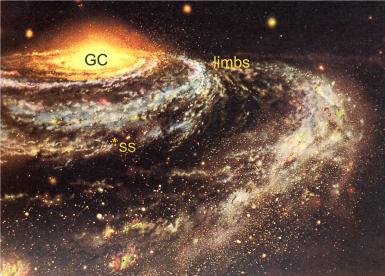

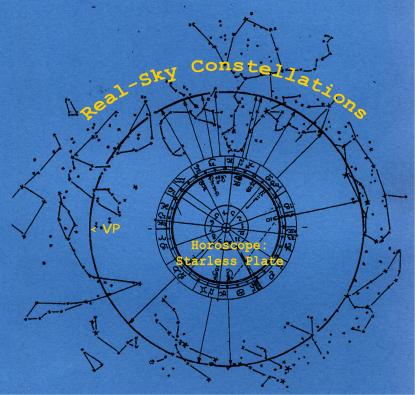
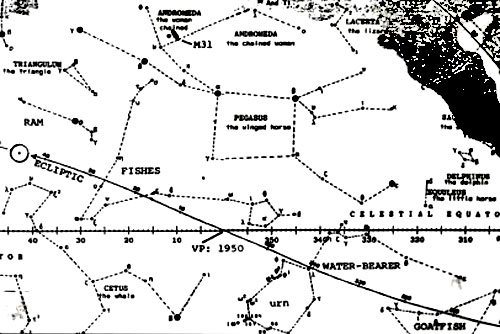
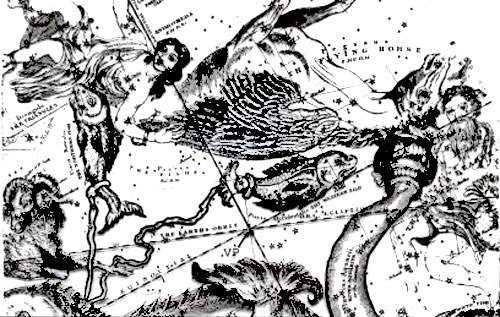
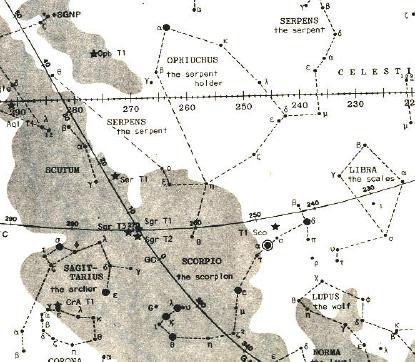

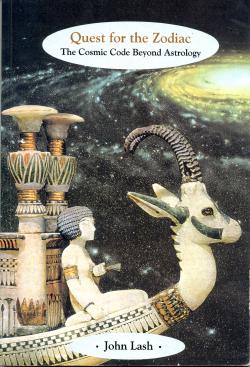
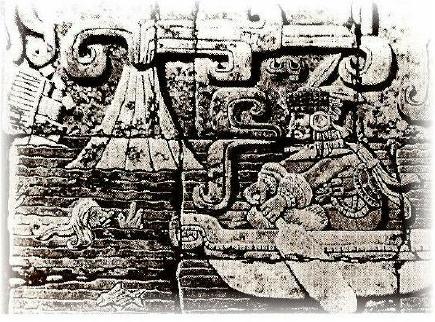
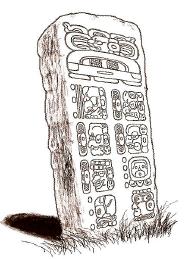 I see nothing woolly-minded in granting
some respect to their long-term timeframe, especially if something
can be learned from doing so.
I see nothing woolly-minded in granting
some respect to their long-term timeframe, especially if something
can be learned from doing so.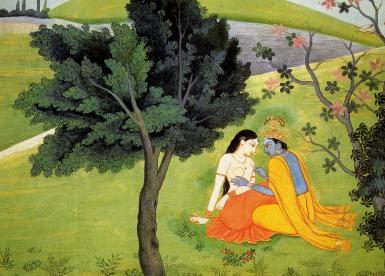


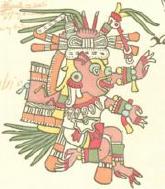 often associated with
the Maya end-time.
Xolotl is the evening star (Venus, appearing after sunset), the Lord
of the West, a shapeshifter - that is to say, a sorcerer and master of
occult powers, siddhis.
often associated with
the Maya end-time.
Xolotl is the evening star (Venus, appearing after sunset), the Lord
of the West, a shapeshifter - that is to say, a sorcerer and master of
occult powers, siddhis. 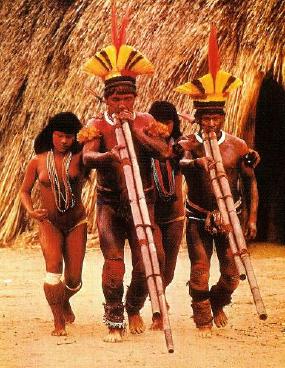
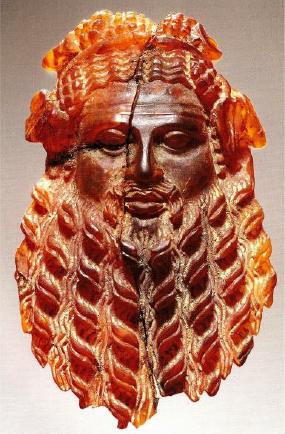


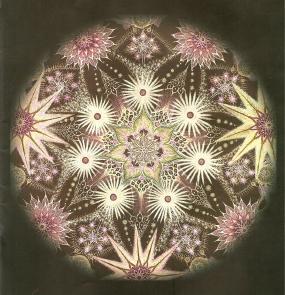

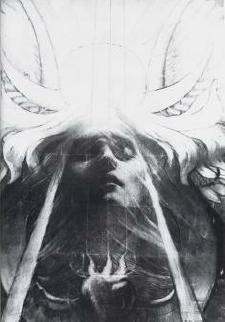
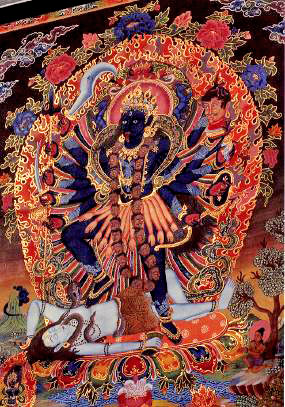
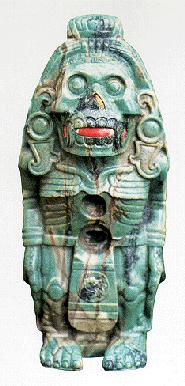 earthquakes, and violent storms: this is
the expression of Xolotl, blank-eyed and aghast.
earthquakes, and violent storms: this is
the expression of Xolotl, blank-eyed and aghast.  beings or humanoid forms such as Blue
Person, inhabit it permanently. Among these are the Maya Blue Face,
a tight clan of diviners and healers who continually "make the
rounds" to the galactic center and back.
beings or humanoid forms such as Blue
Person, inhabit it permanently. Among these are the Maya Blue Face,
a tight clan of diviners and healers who continually "make the
rounds" to the galactic center and back. 